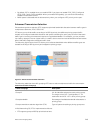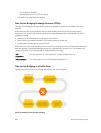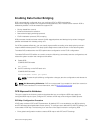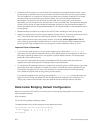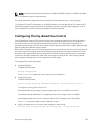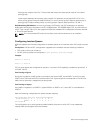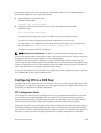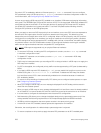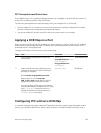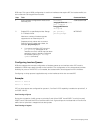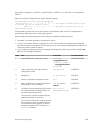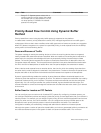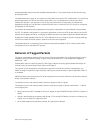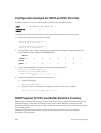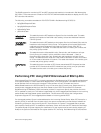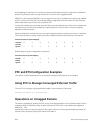
PFC Prerequisites and Restrictions
On an S6000 switch, PFC is globally enabled by default, but not applied on specific 802.1p priorities. To
enable PFC on 802.1p priorities, create a DCB map.
The following prerequisites and restrictions apply when you configure PFC in a DCB map:
• You can enable PFC on a maximum of two priority queues on an interface. Enabling PFC for dot1p
priorities configures the corresponding port queue as lossless.
• You cannot enable PFC and link-level flow control at the same time on an interface.
Applying a DCB Map on a Port
When you apply a DCB map with PFC enabled on a switch interface, a memory buffer for PFC-enabled
priority traffic is automatically allocated. The buffer size is allocated according to the number of PFC-
enabled priorities in the assigned map.
To apply a DCB map to an Ethernet port, follow these steps:
Step Task Command Command Mode
1
Enter interface configuration mode on an
Ethernet port.
interface
{tengigabitEthernet slot/
port /subport |
fortygigabitEthernet
slot/port}
CONFIGURATION
2
Apply the DCB map on the Ethernet port to
configure it with the PFC and ETS settings in
the map; for example:
Dell# interface tengigabitEthernet 1/1/1
Dell(config-if-te-1/1/1)# dcb-map
SAN_A_dcb_map1 Repeat Steps 1 and 2 to
apply a DCB map to more than one port.
You cannot apply a DCB map on an interface
that has been already configured for PFC using
thepfc priority command or which is
already configured for lossless queues (pfc
no-drop queues
command).
dcb-map name
INTERFACE
Configuring PFC without a DCB Map
In a network topology that uses the default ETS bandwidth allocation (assigns equal bandwidth to each
priority), you can also enable PFC for specific dot1p-priorities on individual interfaces without using a
Data Center Bridging (DCB)
257



